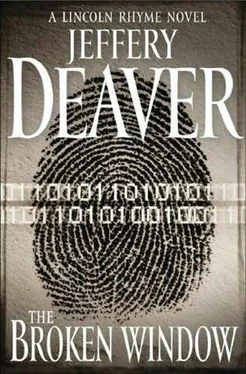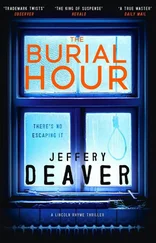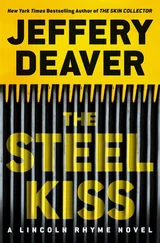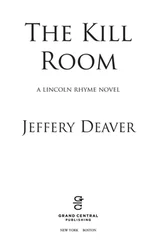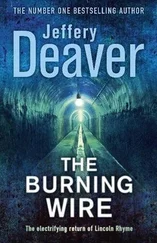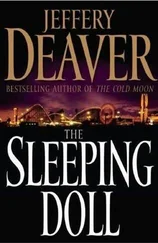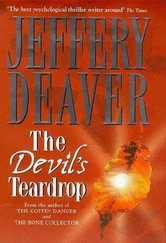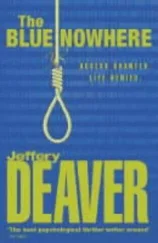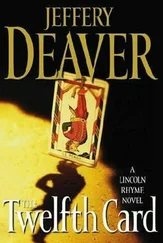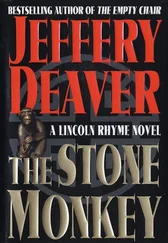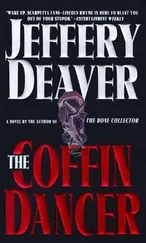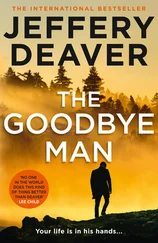“Sure thing.” He gave her his home and mobile numbers. Then frowned. “Can I ask? You seem pretty certain I didn’t do it. How’d you know I was innocent?”
“Your car and garage. Officers searched them and didn’t find any evidence from the murder scene. The killer, we’re pretty sure, was going to plant some things there to implicate you. Of course, if we’d gotten here after he’d done that, you’d’ve had a problem.”
Sachs added, “Oh, one more thing, Mr. Williams?”
“What’s that, Detective?”
“Just some trivia you might be interested in. Do you know owning an unregistered handgun in New York City is a very serious crime?”
“I think I heard that somewhere.”
“And some more trivia is that there’s an amnesty program at your local precinct. No questions asked if you turn in a weapon…Okay, you take care. Enjoy the rest of your weekend.”
“I’ll try.”
I’m watching the policewoman as she searches the trash can where I dumped the evidence. I was dismayed at first but then I realized I shouldn’t have been. If They were smart enough to figure out about me, They’re smart enough to find the trash.
I doubt They got a good look at me but I’m being very careful. Of course, I’m not at the scene itself; I’m in a restaurant across the street, forcing down a hamburger and sipping water. The police have this outfit called the “Anti-crime” detail, which has always struck me as absurd. As if other details are pro-crime. Anti-crime officers wear street clothes and they circulate at crime scenes to find witnesses and, occasionally, even the perps, who have returned. Most criminals do so because they’re stupid or behave irrationally. But I’m here for two specific reasons. First, because I’ve realized I have a problem. I can’t live with it so I need a solution. And you can’t solve a problem without knowledge. I’ve already learned a few things.
For instance, I know some of the people who are after me. Like this redheaded policewoman in a white plastic jumpsuit concentrating on the crime scene the way I concentrate on my data.
I see her step out of the area, surrounded by yellow tape, with several bags. She sets these in gray plastic boxes and strips off the white suit. Despite the lingering horror from the disaster of this afternoon, I feel that twinge inside as I see her tight jeans, the satisfaction from my transaction with Myra 9834 earlier today wearing off.
As the police head back to their cars she makes a phone call.
I pay the bill and walk nonchalantly out the door, acting like any other patron on this fine late-afternoon Sunday.
Off. The. Grid.
Oh, the second reason I’m here?
Very simple. To protect my treasures, to protect my life, which means doing whatever’s necessary to make Them go away.
“What’d Five Twenty-Two leave in that trash can?” Rhyme was speaking into the hands-free phone.
“There’s not much. We’re sure it’s his stuff, though. Bloody paper towel and some wet blood in plastic bags-so he could leave some in Williams’ car or garage. I’ve already sent a sample to the lab for a preliminary DNA match. Computer printout of the vic’s picture. Roll of duct tape-Home Depot house brand. And a running shoe. It looked new.”
“Just one?”
“Yep. The right.”
“Maybe he stole it from Williams’ place to leave a print at the scene. Anybody get a look at him?”
“A sniper and two guys from the S and S team. But he wasn’t very close. Probably white or light-skinned ethnic, medium build. Tan cap and sunglasses, backpack. No age, no hair color.”
“That’s it?”
“Yep.”
“Well, get the evidence here stat. Then I want you to walk the grid at the Weinburg rape scene. They’re preserving it till you get there.”
“I’ve got another lead, Rhyme.”
“You do? What’s that?”
“We found a Post-it note stuck to the bottom of the plastic bag with the evidence in it. Five Twenty-Two wanted to ditch the bag; I’m not sure he wanted to pitch out the note.”
“What is it?”
“A room number of a residence hotel, Upper East Side, Manhattan. I want to check it out.”
“You think it’s Five Twenty-Two’s?”
“No, I called the front desk and they say the tenant’s been in the room all day. Somebody named Robert Jorgensen.”
“Well, we need the rape scene searched, Sachs.”
“Send Ron. He can handle it.”
“I’d rather you ran it.”
“I really think we need to see if there’s any connection between this Jorgensen and Five Twenty-Two. And fast.”
He couldn’t dispute her point. Besides, both of them had ridden Pulaski hard in teaching him how to walk the grid-Rhyme’s coined expression for searching a crime scene, a reference to looking over the area according to the grid pattern, the most comprehensive way of discovering evidence.
Rhyme, feeling both like a boss and a parent, knew that the kid would have to run his first homicide scene solo sooner or later. “All right,” he grumbled. “Let’s hope this Post-it lead pays off.” He couldn’t help adding, “And isn’t a complete waste of time.”
She laughed. “Don’t we always hope that, Rhyme?”
“And tell Pulaski not to screw up.”
They disconnected and Rhyme told Cooper the evidence was on its way.
Staring at the evidence charts, he muttered, “He got away.”
He ordered Thom to put the sparse description of 522 on the whiteboard.
Probably white or light-skinned…
How helpful is that ?
Amelia Sachs was in the front seat of her parked Camaro, the door open. Late-afternoon spring air was wafting into the car, which smelled of old leather and oil. She was jotting notes for her crime-scene report. She always did this as soon as possible after searching a scene. It was amazing what one could forget in a short period of time. Colors changed, left became right, doors and windows moved from one wall to another or vanished altogether.
She paused, distracted once again by the odd facts of the case. How had the killer managed to come so close to blaming an innocent man for an appalling rape and murder? She’d never run into a perp like this; planting evidence to mislead the police wasn’t unusual but this guy was a genius at pointing them in the wrong direction.
The street where she’d parked was two blocks away from the trash-can crime scene, shadowed and deserted.
Motion caught her eye. Thinking of 522, she felt a throb of uneasiness. She glanced up and in the rearview mirror saw somebody walking her way. She squinted, studying him carefully, though the man seemed harmless: a clean-cut businessman. He was carrying a take-out bag in one hand and talking on his cell phone, a smile on his face. A typical resident out to get Chinese or Mexican for dinner.
Sachs returned to her notes.
Finally she was finished and tucked them into her briefcase. But then something struck her as strange. The man on the sidewalk should have passed the Camaro by now. But he hadn’t. Had he gone into one of the buildings? She turned to the sidewalk where he’d been.
No!
She was staring at the take-out bag, sitting on the sidewalk to the left and behind the car. It was just a prop!
Her hand went for her Glock. But before she could draw, the right side door was ripped open and she was staring into the face of the killer, eyes narrowed, lifting a pistol toward her face.
The doorbell rang and a moment later Rhyme heard yet another distinctive footfall. Heavy ones.
“In here, Lon.”
Detective Lon Sellitto nodded a greeting. His stocky figure was encased in blue jeans and a dark purple Izod shirt, and he was wearing running shoes, which surprised Rhyme. The criminalist rarely saw him in casual clothes. He was also struck by the fact that, while Sellitto didn’t seem to own a suit that wasn’t fiercely wrinkled, this outfit looked hot off the ironing board. The only disfigurements were a few stretch marks in the cloth where his belly jutted past his waistband, and the bulge in the back where his off-duty pistol was not efficiently hidden.
Читать дальше
